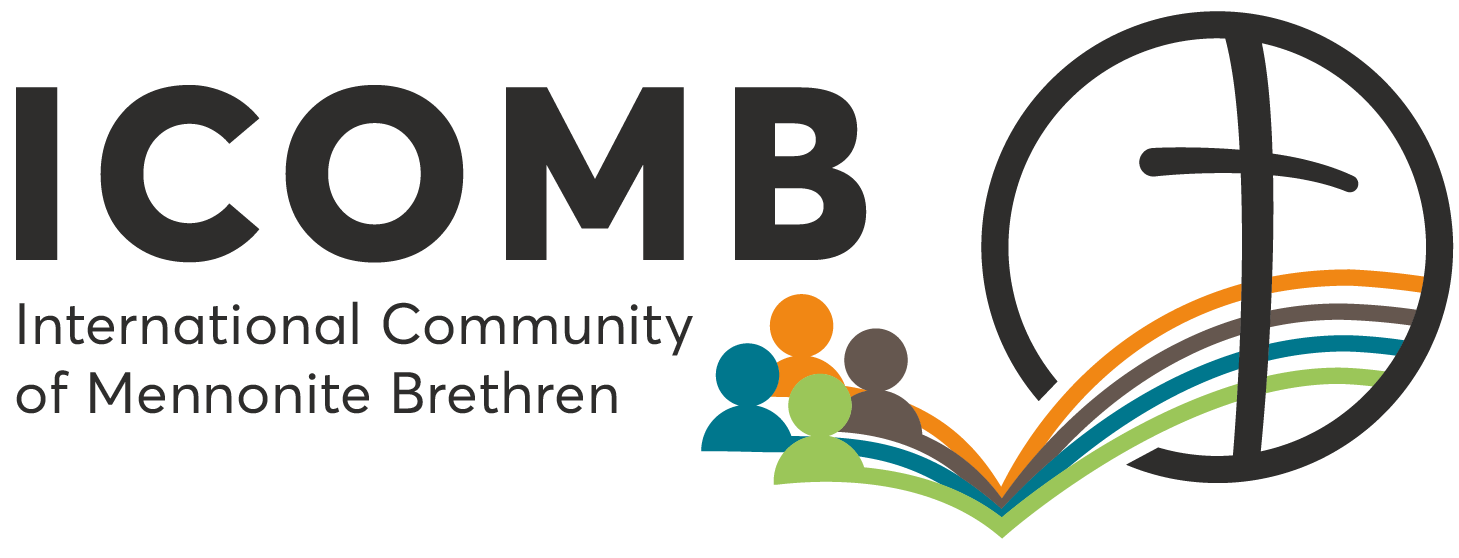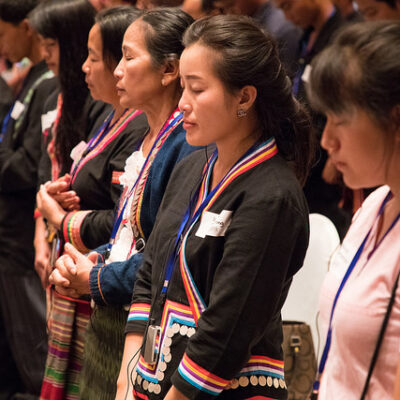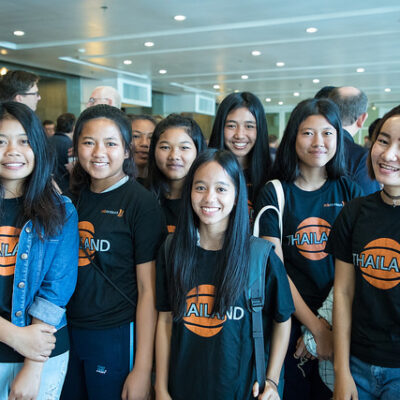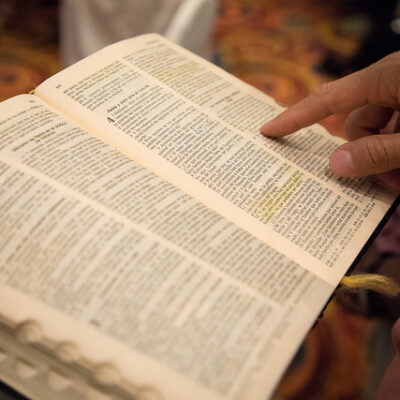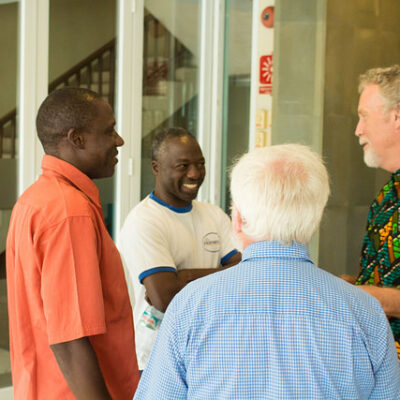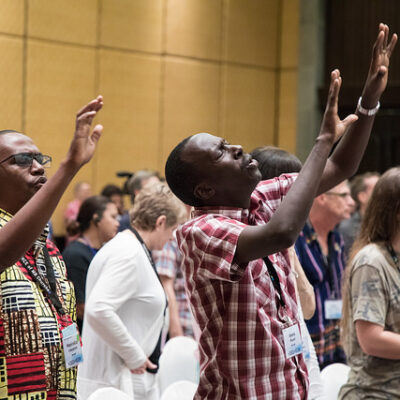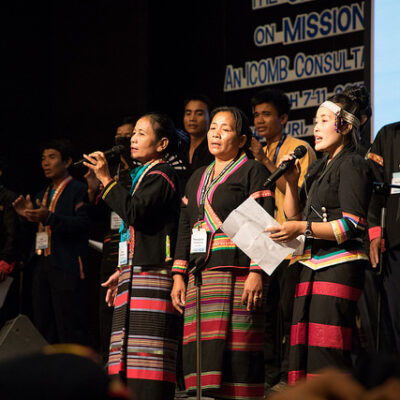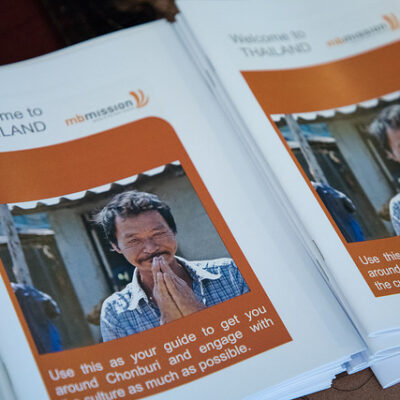Workshop: Understanding Today’s Worldviews for Mission
Arthur Dück
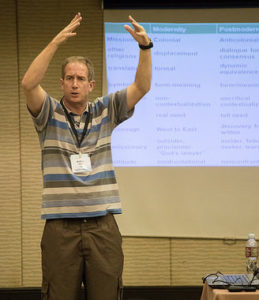
“Who is right?” asked Arthur Dück, faculty member at the Instituto e Seminário Bíblico dos Irmãos Menonitas (Mennonite Brethren Bible Institute and Seminary) in Curitiba, Brazil. Arthur had already offered a spectacular Bible study in the morning’s plenary session on The Mission of the Church: Clarifying the Missio Dei that demonstrated his wit, humour, thorough research and words of timely wisdom premised on solid biblical teaching. Now, in the intimate setting of a workshop with a change of clothes, he was ready to dig into the topic of worldview. Any observer can tell that Arthur loves teaching and he is very good at it.
So, who’s right? Well, that depends is the short answer. It all depends upon one’s worldview – or does it? Using a wide range of authors throughout, Arthur unapologetically leaned on MB missionary and anthropologist Paul Hiebert to not only define what worldview is, but how it functions in each and every one of our lives.
In former years, missionaries involved in cross-cultural communication (MB Mission workers included) engaged foreign cultures without any cognizance of the fact that the gospel proclaimed was always embedded within the particularity of the culture of the one sent. More recent missionary training addresses worldview as a matter of course but the evangel cannot be completely separated from the messenger.
There is great worth in knowing, discerning, being sensitized to and questioning whether we are exuding the gospel or only cultural biases in any conversation.
To consider how this works, think of an onion. Behaviour (the outermost layer) is the first thing we usually observe when engaging another person or people. But how did that person come to behave in that particular way? Well, scholars like Hiebert help us understand that the meaning we derive from our experiences are filtered through beliefs and feelings, premised on a particular worldview that in turn create values that inform our decisions that get expressed by our behaviours.
Observing a person’s behaviour is only a surface reading of a much deeper mystery. Each onion-like layer in our lives needs to be penetrated and transformed by the gospel and presence of the living Christ in order to bring about holistic redemption.
One working definition of culture was the embodiment of those rules that permit interaction, the limits of what is acceptable and what is not. If we conclude anything about a person based on their behaviour only, their actions may be nonsensical. If we do not take into consideration the underlying layers of worldview (filtering grid of experience/feelings/beliefs/values and decisions), we may make erroneous assumptions about a person’s behaviour.
Arthur supplied the sociological and attitudinal aspects of how we experience cultural differences.
First, cultural misunderstandings often happen because of a misread of different beliefs where the problem is a lack of knowledge; the solution to accept humility and become a learner.
Second, ethnocentrism comes into play, often based on different feelings where problems arise because we choose to establish distance between us and the other; the solution lying in the choice to empathize in which the other becomes us and we the other.
Thirdly, Arthur spoke of premature judgments based on different values where the problem is an assumption that our cultural is biblical; the solution: evaluating every culture by the Bible.
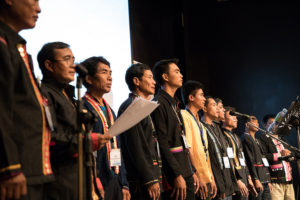 If the tremendous complexity of worldview can be reduced for a moment to the idea of corrective lenses, worldview is the set of glasses through which we see reality. We never question our glasses, unless they distort the image we see. This is the only time that we become open to another worldview. However, as Christians called by God to love the visible other, we need the discipline of having our worldview challenged by a fresh read of Scripture.
If the tremendous complexity of worldview can be reduced for a moment to the idea of corrective lenses, worldview is the set of glasses through which we see reality. We never question our glasses, unless they distort the image we see. This is the only time that we become open to another worldview. However, as Christians called by God to love the visible other, we need the discipline of having our worldview challenged by a fresh read of Scripture.
The question is: how do we read the Bible?
Our biblical narrative stands over other competing metanarratives (worldviews) in its rendering of Creation, the Fall, the History of Redemption, and Redemption Completed. For too long, we have read the text through the lens of modernism’s positivism (the view that humanity is always and ever progressing; ever improving, evolving to the benefit and deliverance of us all). But the broken shards of modernism now lie on the floor. Postmodernity’s diffused dystopian leanings don’t satisfy us either and stand in contrast to the divine intent expressed in Scripture.
How, then, do we approach the Bible?
With more material than he had time to present, Arthur proposed Brian Walsh and J. Richard Middleton’s four questions with a fifth added by N.T. Wright are most helpful when reading the Bible. Our lives are shaped by the answers explicit or implicit we give to these questions:
- Where are we? What kind of world do we live in?
- Who are we? What does it mean to be human?
- What is wrong? What is the fundamental problem with the world?
- What is the remedy? What will fix the problem?
- What time is it? At what point in the story do we enter it? (N.T. Wright)
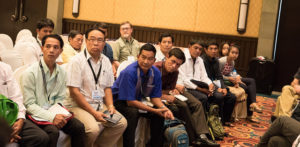 To close off the workshop, Arthur reminded us that bringing a “high” religious worldview that overlooks, diminishes or negates worldviews informed by folk religion (endemic to every society, every culture) is foolish at best. If we don’t address the meaning of life and the problem of death, the good life and threat of calamity, guidance and the problem of the unknown, and finally the issue or morality and the problem of evil, we will waste precious time and resources. These are the existential questions that people are grappling with. The gospel we present must address what folk religion addresses.
To close off the workshop, Arthur reminded us that bringing a “high” religious worldview that overlooks, diminishes or negates worldviews informed by folk religion (endemic to every society, every culture) is foolish at best. If we don’t address the meaning of life and the problem of death, the good life and threat of calamity, guidance and the problem of the unknown, and finally the issue or morality and the problem of evil, we will waste precious time and resources. These are the existential questions that people are grappling with. The gospel we present must address what folk religion addresses.
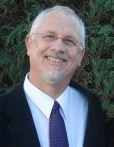 —Ken Peters is pastor of Saanich Community Church, Victoria, B.C., Canada. He has been inspired and enlightened throughout his ministry by those who’ve engaged the world’s peoples with the gospel of Jesus Christ.
—Ken Peters is pastor of Saanich Community Church, Victoria, B.C., Canada. He has been inspired and enlightened throughout his ministry by those who’ve engaged the world’s peoples with the gospel of Jesus Christ.
